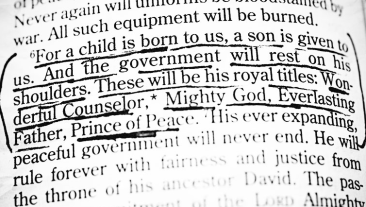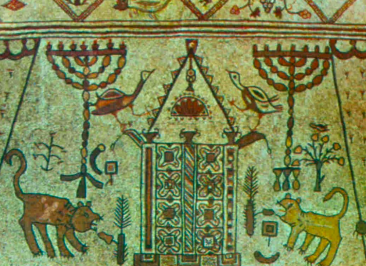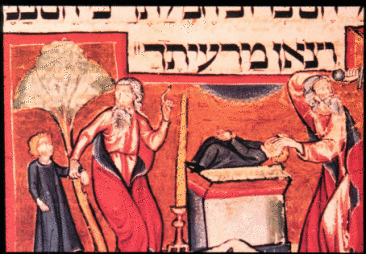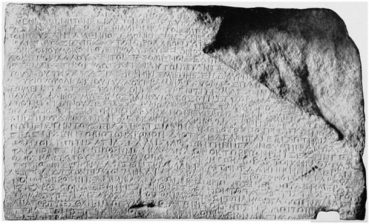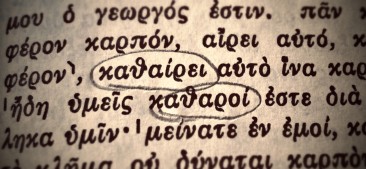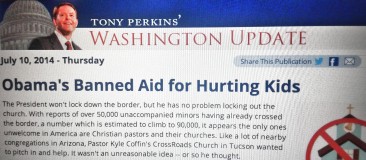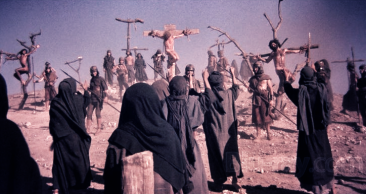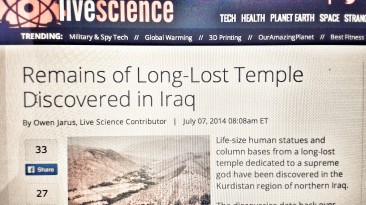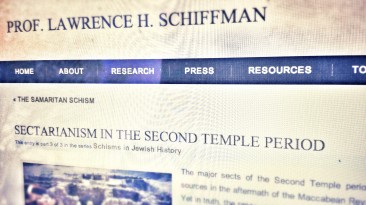The Gospel of Luke records a revelatory and visionary event that happened in the life of a young Jewish girl name Miriam (Mary), who lived in the northern hill country of Judea, called “the Galil” (Galilee). The Jewish people have been conquered, occupied, and oppressed by the Romans for about 40 years when this event takes place:
Author Archives: Jimmy Doyle
Apocalyptic Advent: Isaiah 9
The word of YHWH to Isaiah the Prophet:
The people who walked in darkness
have seen a great light;
those who dwelt in a land of deep darkness,
on them has light shone.
The Menorah in the New Testament
The Menorah is mentioned in two passages in the NT: once in Hebrews (9:2) and then in the opening vision of Revelation. In this latter apocalyptic vision, the menorah. with its seven lamps, is identified with the seven churches to whom the vision is directed, with each receiving a message to its angel or messenger (Greek angelos means “messenger”). These churches were all located in the western region of modern day Turkey. It is notable that the One in the vision is seen as being “in the midst” and “walking among the lampstands”.
Torah Reading, Week 4: “And He Appeared…”
This week’s Torah reading is Vayeira (וַיֵּרָ֤א—”And he appeared”) Genesis 18:1-22:24. It includes the promise that Sarah would have a son, Isaac or Yitzak—a boy named “laughter” because Sarah (who was 90 in the biblical narrative) laughed when she heard it. I suppose, in this regard, he could have easily been called named Yivkeh, “weeping”.
The Birth of a Savior
On this day in 63 BCE, Gaius Octavius Thurinus was born. When he was nineteen, he would become the adopted heir of his great-uncle, Julius Caesar. We know him as Octavianus or Caesar Augustus, the first Emperor of Rome.
Later during his reign, his birth was celebrated as that of a Savior, as is recorded in the Greek Priene Calendar Inscription:
Continue reading
Lost In Translation: Pruned or Cleaned in John 15:2-3
A group I meet with on Thursday nights has been studying the Gospel of John, and as we’ve progressed I’ve been working my way through it in Greek, trying to do my own translation. What I’ve found is that I have great sympathy and empathy for Bible translators, who (among a multitude of other struggles) are so often forced to take all the nuanced options in original languages and reduce them to one. Or they have to take wordplays in one language and try to figure out solutions for making them work in translation (or not). Sometimes, however, I wonder “Why did they make that translation choice!?” because for one reason or other it just doesn’t make sense to me. One of those passages is John 15:1-4. Continue reading
The Government, Undocumented Children, and the Church: Why Tony Perkins Should Retract His Statements
There’s this piece gaining momentum on Facebook status updates that was written by Tony Perkins with the Family Research Council. In it, Perkins tells the story of one Tuscon pastor’s failed attempt to get aid to the unaccompanied and undocumented minors being held at the Nogales Placement Center in Arizona, and then uses this anecdotal story as evidence to accuse the US government (specifically, President Obama) of “banning” the church from helping. He says: Continue reading
The Reality of Crucifixion
Two scholars, Bart Ehrman and Craig Evans, are having a debate over Ehrman’s positioni in his recently released How Jesus Became God that Jesus’ body would not have been buried. Evans makes the case otherwise.
While I agree with Evan’s position that Jesus was, in fact, buried, Ehrman is a good scholar, and this post on his blog describing crucifixion is well written. Here is an important snippet:
Getting Caught Up On Paul
There’s a lot going on with Pauline studies in the theological world (as if that’s anything new). It can really be difficult to keep up with in terms of reading. N.T. Wright’s latest work, Paul and the Faithfulness of God, has over 1700 pages! If you’re interested in a brief synopsis where things are concerning Pauline studies from Wright’s perspective, the attached video of Wright being interviewed by Michael J. Gorman is a good start. (Thanks to Kurt Willems for posting it).
Amid Chaos, Discoveries Are Being Made In Iraq
According to reports in LiveScience, new archeological discoveries related to the Urartians, Scythians, and Assyrians are being made in the northern ares of Iraq (in Kurdistan). This comes in the midst of the political and social conflicts in the region: Continue reading
Schiffman on Jewish Sectarian Groups At the Time of Jesus
Professor Lawrence Shiffman, in part three of a series on Schisms in Jewish History, has written a nice summary of some of the differing groups that would have been active near the lifetime of Jesus. Some of these, the Pharisees and Sadducees, are mentioned in the New Testament. What is often missed in our understanding of the first century Jewish world is the level of diversity present within it. Continue reading
“You keep using that word. I do not think it means what you think it means.”
Okay, so I have a lot of pet peeves.
One of them is when someone makes expert-like claims about this or that in the Bible as it’s related to Hebrew or Greek when it is obvious they have no knowledge of either language.
So today I’m responding to an article a friend shared on Facebook (I know, I know: people with pet peeves should never even get close to Facebook). The article was titled “Cain’s Wife—Who Was She?” and is apparently part 6 of a series by Ken Ham, a fairly well-known Christian apologist (you know, the one who debated Bill Nye). This article (though written in 2007) is apparently headlining the Answers in Genesis (Ham’s apologetics organization) homepage today.

